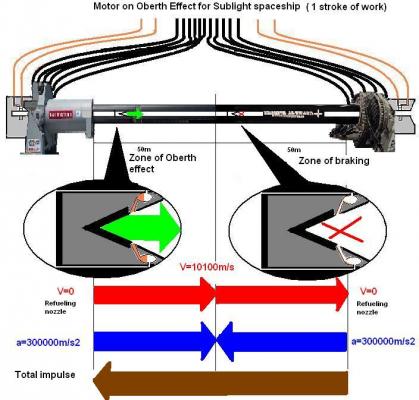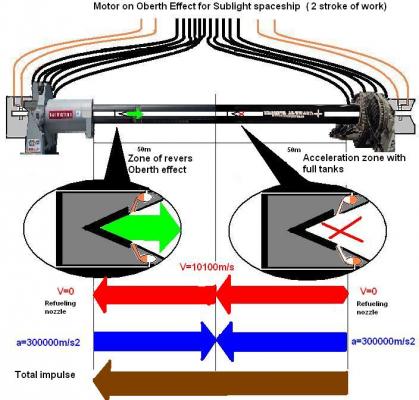-
Posts
22 -
Joined
-
Last visited
Content Type
Profiles
Forums
Events
Posts posted by Ilinca Sergiu
-
-
In my drawings the only thing which is moved with high acceleration ( including 300000 m/s2)- the nozzle of the jet engine(similar object to the nozzle).
Where you saw people under acceleration 300000 m/s2 ?. Maybe it horror picture belongs to you personally?
150000 m/s2 acceleration limit for electrical circuit- these data are taken from the archives of what century?
0 -
It would be very interesting to know: - that there is speculation? My physical model based on Oberth effect, a brilliant mathematical expression from HopDavid of this effect, or the Oberth effect itself ?
0 -
Who found the formula for kinetic energy?
That's a good question. I think anyone who could not prove the law of conservation of power. Specify not the law of conservation of momentum,work and energy, but POWER .
0 -
-
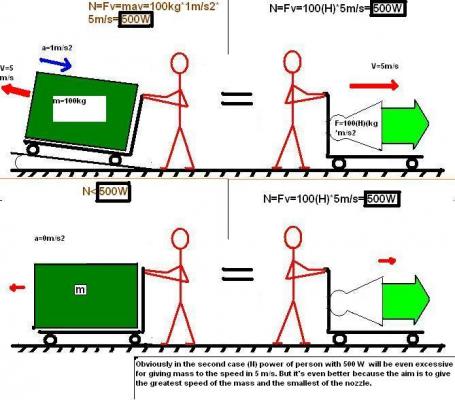 I'll try to explain in more detail. The man pushes the nozzle against the force of thrust. Physically, it is difficult for him to do. If he pushes the nozzle certain distance within a certain time, he spends some power. The sooner he does it, the more he gets tired (consumes more power).This power is transferred to his feet on the ground surface or to another mass (for example a moving platform).
I'll try to explain in more detail. The man pushes the nozzle against the force of thrust. Physically, it is difficult for him to do. If he pushes the nozzle certain distance within a certain time, he spends some power. The sooner he does it, the more he gets tired (consumes more power).This power is transferred to his feet on the ground surface or to another mass (for example a moving platform).The same thing happens if someone pushes some mass which applies a very small acceleration. If this acceleration not exist ,that people will push any weight without power consumption.
In this case, the equivalence between (F) and (m) will not be ,the nozzle will resist movement and the mass will not. I.e. this equivalence will shift giving speed only the mass but not the nozzle. But this is a perfect case because in reality, it is necessary to give first some acceleration to get the velocity (which occurs when nozzle is in acceleration I described at the beginning). If such an ideal case was that ,the system could unbalance even more than the equivalence of (F) and (m).

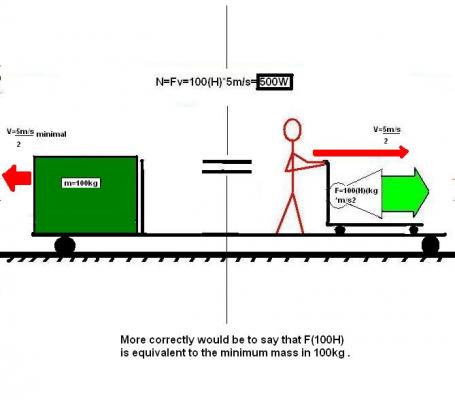
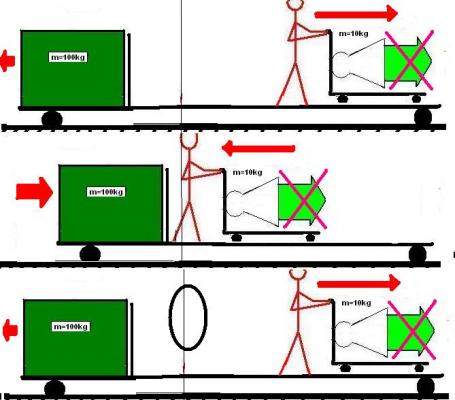 0
0 -
-
-
-
Then calculate the impulse imparted by gravity. That's the amount of overall change in momentum of the system.
No need to imparted by gravity here.
0 -
Over arbitrarily short time intervals, such as the instant before and after a particle is ejected, the effect is negligible.
Yes,but we are interested in short time but a certain interval of time.
What's not essential to the acceleration-gravity 10m/s2 and particles with 400000m/s2 , can be significant for return values or equal - 400,000 and 400,000 m/s2 values.
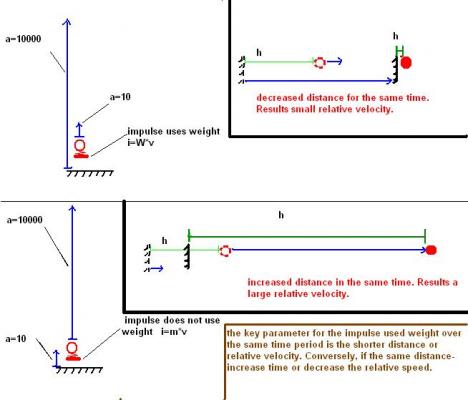
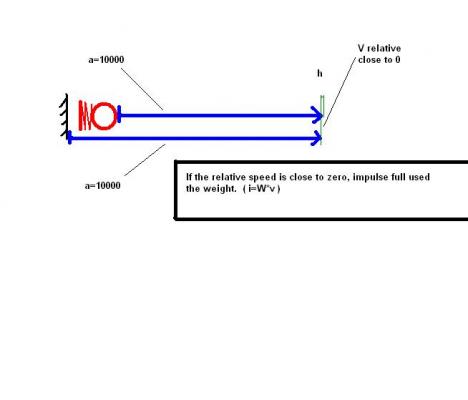
If the relative speed is close to zero - i=W*v
0 -
The impulse will be found by conservation of momentum. The momentum of the container and the ejected ball will be equal in magnitude and opposite in direction if you are in the center-of-momentum frame.
Thrust would be found if this were a continuous action, and F = dP/dt
You calculate the momentum for resting or uniformly moving system ( which is the same) of the box-ball. And saying that it is right for accelerating system box-ball. So you deny the influence of the "gravity-acceleration" inside of the box on the momentum. I can't agree with ,gravity affects the momentum.
0 -
The Oberth effect is fairly simple: a given amount of thrust will be more efficient at increasing KE if the rocket is moving. That's because a set amount of fuel will do more work, since the thrust is exerted over a greater distance.
i.e. it takes a certain amount of energy to get to a speed v (1/2mv2). It takes four times as much to get to 2v, so to get from v to 2v you need an additional 3/2mv2 of energy, i.e. you need to add three times as much energy. But you don't need three times the fuel to do it, because you do more work for a given thrust as you move faster.
So when you ask "100,000kgf will be increase the total momentum of the system?" the answer is no.
I don't see the connection of your idea to the Oberth effect. I also think you will get nowhere if your units don't match. kgf is a unit of force (and a non-SI unit at that) and not momentum.Making examples more complicated is often not the best approach to solving a problem. Success is usually found in making the example as simple as you can, without losing important detail. Most basic analysis is done without numbers.
0 -
To understand my question needed to simplify these physical model to one very simple.
Probably easier is impossible.
Far away in space is the space station. At the station there is a Elevator without ceiling and the Elevator shaft is also open to space. On the floor of the Elevator has the ball weighing 1kg . In this Elevator is an astronaut he takes the ball and throws it up with the speed 10 m/s. The ball flies out of the station with the speed 10 m/s. The thrust obtained station from throwing the ball is Ftrast=m*v=10kgf.
This Elevator is also the ability to move up and down with very large accelerations (10000g). The movement of the Elevator up and down with any accelerations and velocities has no impact on the total momentum of the station. He will always be ( 0 ). In the absence of Fthrust the station will make only oscillatory movements.
If the Elevator will be acceleration in 10000g the ball on the floor will have a weight of 10,000kg or 10T. The astronaut will not be able to pick up the ball and throw up. And the astronaut will not withstand this acceleration. Now to throw the ball during acceleration of the lift we need Superman. I.e. this person should be 10,000 times stronger than ordinary cosmonaut. During acceleration Elevator Superman takes the ball with weight 10T and throws it up with the speed in 10 m/s.
Now what may be the pressure on the floor of the Elevator from this shot and accordingly Fthrust ?
Obviously it will be much greater than in the case without acceleration. And it is : the weight of the ball M=10000 kg, speed 10m/s,.. F thrust = M*v=100000kgf (I know weight not mass, but how differently? ). Do not forget that the total momentum of the system without Fthrust is ( 0 ) and these 100,000kgf will be increase the total momentum of the system?
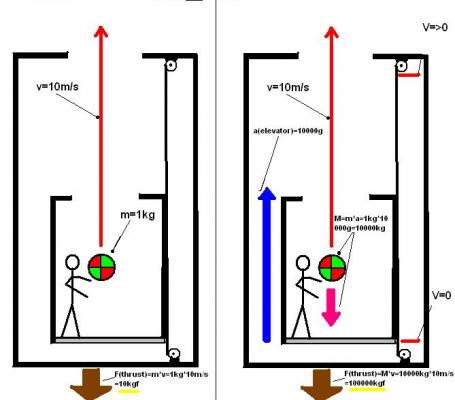
I think this is Oberth effect. But today it is used only reverse view .When the spacecraft passes periapsis gravity celestial body brake the spacecraft ( the bigger the ship's speed and gravity the more will be this brake and the more engine thrust).
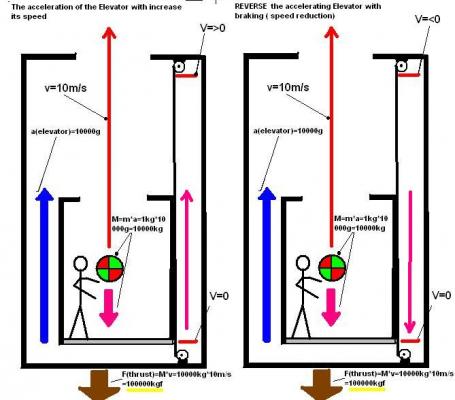
I think Oberth effect on the orbit can be compared with swings. Appears in periapsis when appears the weight of burning fuel.
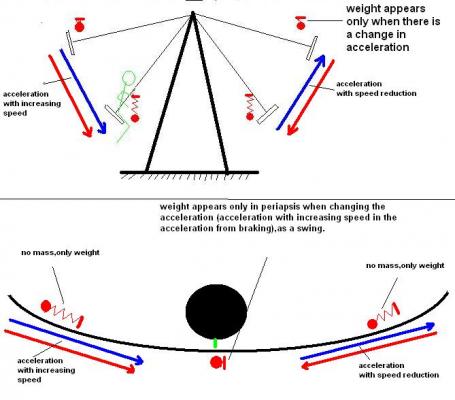
Oberth effect on the multi-stage rocket (change of acceleration).
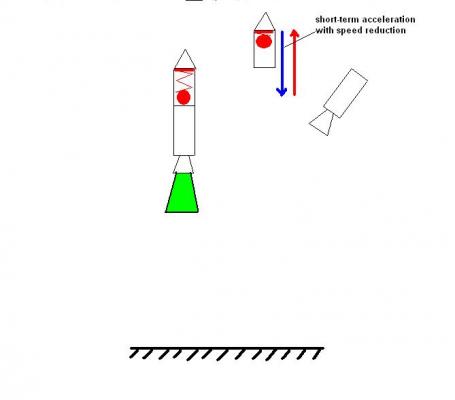
The passage periapsis of the rocket can be compared with the passage obstacles of bullet.
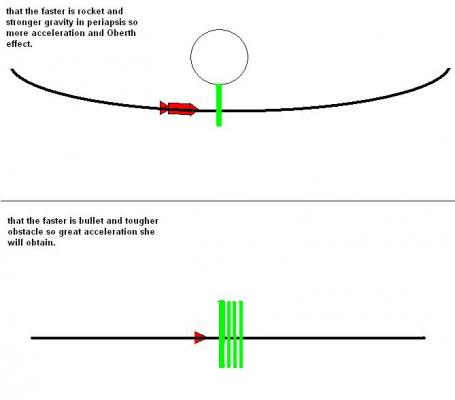
The increase of kinetic energy in Obert effect does not arise from any relative velocities but from the increased potential energy of the fuel in nozzle. Oberth effect are the reflection of the law of energy conservation.
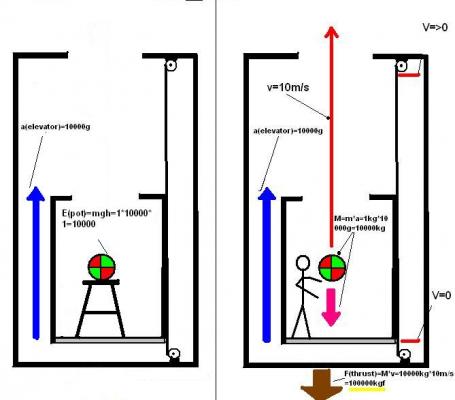 0
0 -
Many perceive Oberth effect only with move the jet engine (rockets) in a circular orbit. So I suggest the model of my engine with circular motion of jet engine. Maybe it will be more clear what I mean.
The only difference here is what I have instead of the gravity - acceleration (but according to Einstein they are identical).0 -
There's no way to analyze the lower drawings, as the information is incomplete. You need the mass rate of the exhaust as well as its speed to find a thrust (and the effects of the pressure drop in the nozzle). As the mass of the rocket would be decreasing with time, this will give a non-constant acceleration.
Maybe these calculations to leave more experienced readers ?
I think F(thrust) = m(mass) can check with a simple experiment(with isochoric process more difficult).
0 -
-
Consistency is more important than the specific choice, but since this is physics related, Newtons will do. mv does not get you Newtons.
Yes maybe on this, many people express thrust of jet engine through (kgf),(Tf).
1kgf=9.8N
0 -
F ≠ mv and kg is not a unit of force. This is all gibberish until you deal in proper physics equations and units.
What unit you prefer ? -
- Dyne
- Kilogram-force
- Kip (unit)
- Newton (unit)
- Planck force
- Pound (force)
- Poundal
- Sthène
- Ton-force
- ----at your discretion, include them in your calculations. My question is not about unit - about how can the force in some cases (my case) to behave as mass, what is the difference?
@OP:
You are mixing up mass and force.
Force = Mass x Acceleration
Similarly, if you multiply Mass and a Velocity, you end up with Momentum.
Yes and do it intentionally.
-2 -
You are right.Thanks for the cite. It's a bad explanation. Kinetic energy is not linear in speed, so expecting it to be so, e.g. a doubling of speed to double the energy, is a misunderstanding of physics, not some kind of extra benefit. It's not good to base a project off of an incorrect idea.
The issue here is that work is a function of displacement. A rocket traveling slowly doesn't move very far in a given amount of time. Thus for a constant thrust, not much work is done. But a rocket moving faster, a greater distance is traveled and more work is done. The rocket is more efficient in increasing the kinetic energy. Even though nothing about the function of the rocket itself has changed.
———
On to the next material:
Force is not mass. F ≠ mav, F ≠ Fv, F ≠ Fs
Fv is instantaneous power if they are in the same direction (there's a dot product). Fs is work (again, it's a dot product). You need to use terminology as it's already defined (and not repurpose it) to communicate effectively. There's legitimate physics here, but you have to do that physics to analyze this system.
Yes Kinetic energy is not linear in speed- but in acceleration?
But does it matter changing something in functions of rocket or not - if there is a real increase its speed ?( your explanation is not something abstract - real increase in the velocity of a rocket).
Of course it would be better to explain my engine with work and power.
Indeed (F) no (m) but offer such an experiment with a truck.
-1 -
You mention a citation but don't actually give one. It's not IMO a particularly good explanation of the Oberth effect, since 1/2 mv2 + 1/2 mvb2 is not what you'd expect, assuming you had a basic understanding of kinematics and math.
Of course m(v*vb) does not have Oberth effect but this is the essence on which to base this effect.
link : http://hopsblog-hop.blogspot.com/2013/10/what-about-mr-oberth.html
0 -
What do you think- my engine on the Oberth effect will work or not?
I think this is the main part explaining the Oberth effect: (citation)-
"Take 1/2 of m (v + vb)v2, and you get 1/2 mv2 as well as 1/2 mvb2, the kinetic energy you'd expect from adding these two speeds. On top of that, you also get m(v * vb). The pink rectangle above is Oberth gravy.
For example a kilogram going 10 meters/second has kinetic energy of 50 joules; a kilogram going 2 meters/second has kinetic energy of 2 joules. But a kilogram moving (10 + 2) meters/second doesn't have a kinetic energy of 52 joules, rather (50 + 2 + (10 * 2)) joules. Starting with a 10 meter/second speed and speeding up another 2 meters a second gives you a 20 joule Oberth benefit.
So accelerating a mass already moving fast gives you more kinetic energy for your buck."What do you think- my engine on the Oberth effect will work or not?I think this is the main part explaining the Oberth effect: (citation)-
"Take 1/2 of m (v + vb)v2, and you get 1/2 mv2 as well as 1/2 mvb2, the kinetic energy you'd expect from adding these two speeds. On top of that, you also get m(v * vb). The pink rectangle above is Oberth gravy.
For example a kilogram going 10 meters/second has kinetic energy of 50 joules; a kilogram going 2 meters/second has kinetic energy of 2 joules. But a kilogram moving (10 + 2) meters/second doesn't have a kinetic energy of 52 joules, rather (50 + 2 + (10 * 2)) joules. Starting with a 10 meter/second speed and speeding up another 2 meters a second gives you a 20 joule Oberth benefit.
So accelerating a mass already moving fast gives you more kinetic energy for your buck."I wonder correctly I believe or not-in this case here?
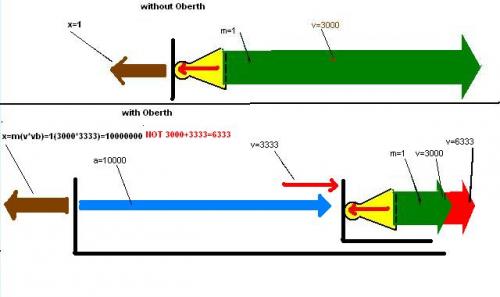 I think in the case of accelerating, the energy of the jet stream will be:
I think in the case of accelerating, the energy of the jet stream will be: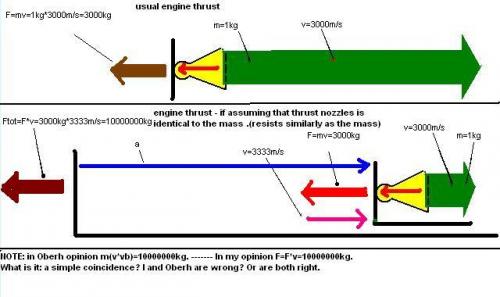
What do you think- my engine on the Oberth effect will work or not?
I think this is the main part explaining the Oberth effect: (citation)-
"Take 1/2 of m (v + vb)v2, and you get 1/2 mv2 as well as 1/2 mvb2, the kinetic energy you'd expect from adding these two speeds. On top of that, you also get m(v * vb). The pink rectangle above is Oberth gravy.
For example a kilogram going 10 meters/second has kinetic energy of 50 joules; a kilogram going 2 meters/second has kinetic energy of 2 joules. But a kilogram moving (10 + 2) meters/second doesn't have a kinetic energy of 52 joules, rather (50 + 2 + (10 * 2)) joules. Starting with a 10 meter/second speed and speeding up another 2 meters a second gives you a 20 joule Oberth benefit.
So accelerating a mass already moving fast gives you more kinetic energy for your buck." 3magnetic jet S.Ilinca.jpgI think in the case of accelerating, the energy of the jet stream will be:
3magnetic jet S.Ilinca.jpgI think in the case of accelerating, the energy of the jet stream will be:
I propose to consider a model, in which supposedly thrust nozzle behaves like a mass.( resists the movement as some mass). In this case- in my opinion F=F*v=10000000kg, in Oberth opinion m=(v*vb)=10000000kg. What is it : a simple coincidence? I and Oberth are wrong? Or are both right,and we see the same process-which is outside incorrectly seen as (v+v).Wikipedia about the Oberth effect (why the motion of a rocket increases the kinetic energy of the propellant ):
- e=av
- E=Fv
- E=Fs
From the beginning I try to show that:
-If acceleration increases the weight of the propellant in a nozzle : ( ma=F ) , F=mav,
-If to consider (F) of thrust identical to (m) mass : (F=m) , F=Fv,
-If not consider (F) of thrust identical to (m) mass : F=m(v*vb) ,that is identical to F=Fv,
-if considered covered by a nozzle distance (s) instead of speed (v) : F=Fs,
See no differences except the fact that I have the engine moves relative to the ship, Oberth relative to the selected point ( or celestial body ). and (F) instead (E) for clarity.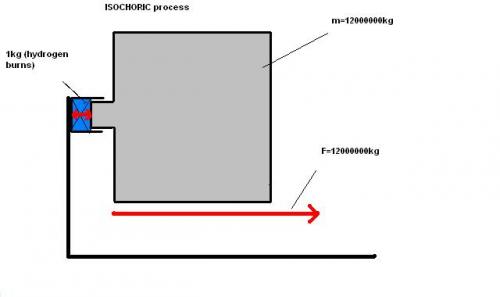 Take a look from the other side .
Take a look from the other side .
1 kg of burning hydrogen has approximately 120 MJ energy. This is - work in 12000000 kgm. This energy can move 12000000 kg per 1 meter . In a vacuum, this will mean that a lot had the effect of F in 12000000 kg . So when almost isochorically process 1 kg of hydrogen can give a great power - 12000000 kg . ( for more isochorically process (F) increases proportionally) .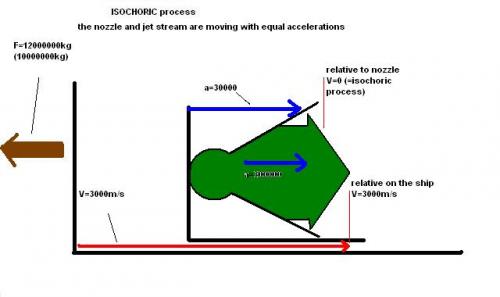 Now look at the nozzle my motor which moves with acceleration equal to the acceleration of a jet . (Compare with my previous models).What do you think- my engine on the Oberth effect will work or not?
Now look at the nozzle my motor which moves with acceleration equal to the acceleration of a jet . (Compare with my previous models).What do you think- my engine on the Oberth effect will work or not?
I think this is the main part explaining the Oberth effect: (citation)-
"Take 1/2 of m (v + vb)v2, and you get 1/2 mv2 as well as 1/2 mvb2, the kinetic energy you'd expect from adding these two speeds. On top of that, you also get m(v * vb). The pink rectangle above is Oberth gravy.
For example a kilogram going 10 meters/second has kinetic energy of 50 joules; a kilogram going 2 meters/second has kinetic energy of 2 joules. But a kilogram moving (10 + 2) meters/second doesn't have a kinetic energy of 52 joules, rather (50 + 2 + (10 * 2)) joules. Starting with a 10 meter/second speed and speeding up another 2 meters a second gives you a 20 joule Oberth benefit.
So accelerating a mass already moving fast gives you more kinetic energy for your buck." 3magnetic jet S.Ilinca.jpgI think in the case of accelerating, the energy of the jet stream will be:
3magnetic jet S.Ilinca.jpgI think in the case of accelerating, the energy of the jet stream will be: 0magnetic jet S.Ilinca.jpg
0magnetic jet S.Ilinca.jpg
I propose to consider a model, in which supposedly thrust nozzle behaves like a mass.( resists the movement as some mass). In this case- in my opinion F=F*v=10000000kg, in Oberth opinion m=(v*vb)=10000000kg. What is it : a simple coincidence? I and Oberth are wrong? Or are both right,and we see the same process-which is outside incorrectly seen as (v+v).Wikipedia about the Oberth effect (why the motion of a rocket increases the kinetic energy of the propellant ):
- e=av
- E=Fv
- E=Fs
From the beginning I try to show that:
-If acceleration increases the weight of the propellant in a nozzle : ( ma=F ) , F=mav,
-If to consider (F) of thrust identical to (m) mass : (F=m) , F=Fv,
-If not consider (F) of thrust identical to (m) mass : F=m(v*vb) ,that is identical to F=Fv,
-if considered covered by a nozzle distance (s) instead of speed (v) : F=Fs,
See no differences except the fact that I have the engine moves relative to the ship, Oberth relative to the selected point ( or celestial body ). and (F) instead (E) for clarity. magnetic jet Oberth5 S.Ilinca.jpgTake a look from the other side .
magnetic jet Oberth5 S.Ilinca.jpgTake a look from the other side .
1 kg of burning hydrogen has approximately 120 MJ energy. This is - work in 12000000 kgm. This energy can move 12000000 kg per 1 meter . In a vacuum, this will mean that a lot had the effect of F in 12000000 kg . So when almost isochorically process 1 kg of hydrogen can give a great power - 12000000 kg . ( for more isochorically process (F) increases proportionally) . Êîïèÿ magnetic jet Oberth6 S.Ilinca.jpgNow look at the nozzle my motor which moves with acceleration equal to the acceleration of a jet . (Compare with my previous models).Turns out the same.
Êîïèÿ magnetic jet Oberth6 S.Ilinca.jpgNow look at the nozzle my motor which moves with acceleration equal to the acceleration of a jet . (Compare with my previous models).Turns out the same.
If there is a point of reference:
-If acceleration increases the weight of the propellant in a nozzle : ( ma=F ) , F=mav,
-If to consider (F) of thrust identical to (m) mass : (F=m) , F=Fv,
-If not consider (F) of thrust identical to (m) mass : F=m(v*vb) ,that is identical to F=Fv,
-if considered covered by a nozzle distance (s) instead of speed (v) : F=Fs,
and,
If no point of reference:
-transformation of Isobaric process in Isochorically and increases static component of thrust.0


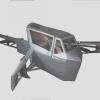
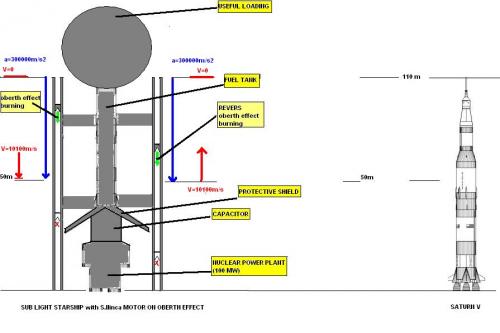
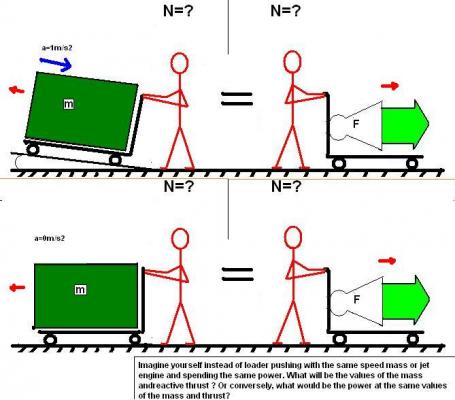
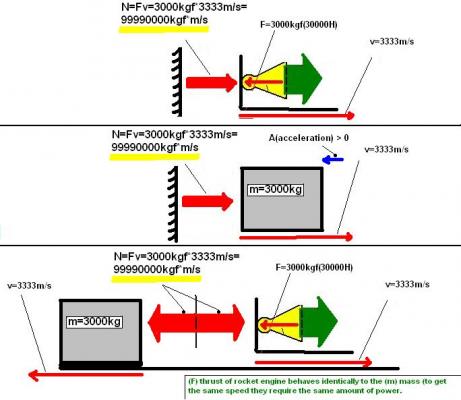
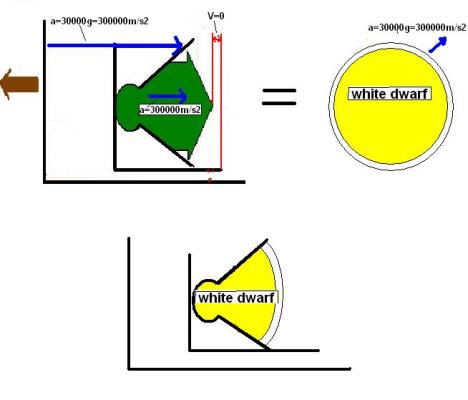
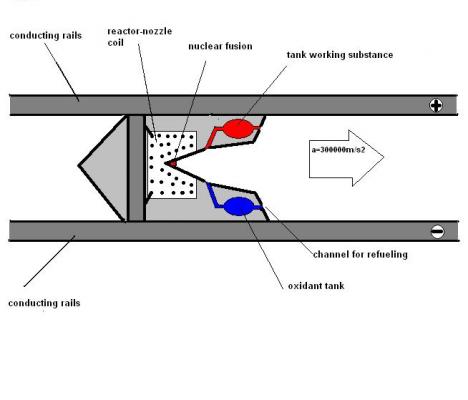
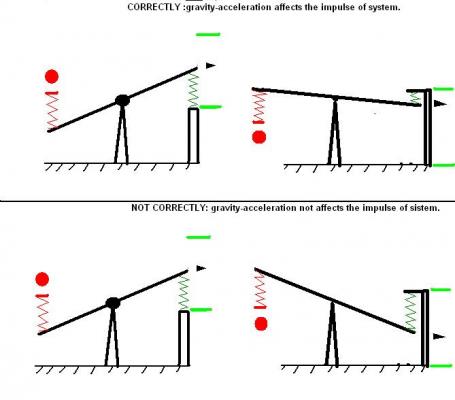
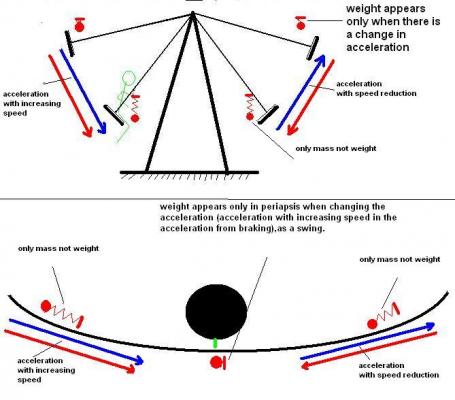
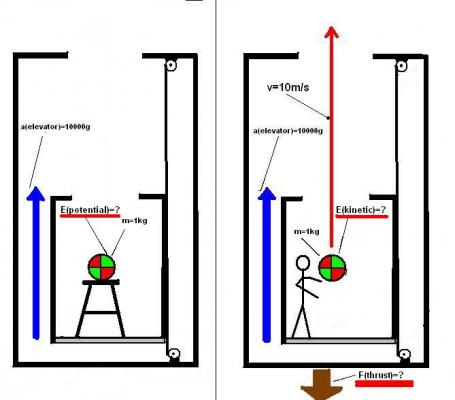
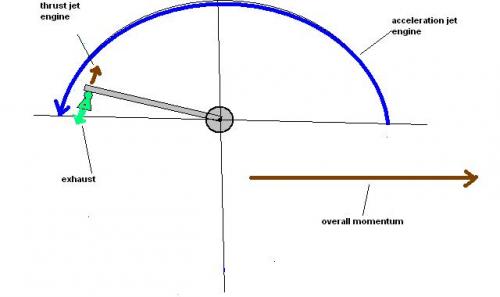
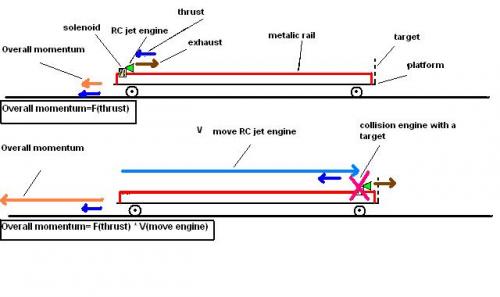

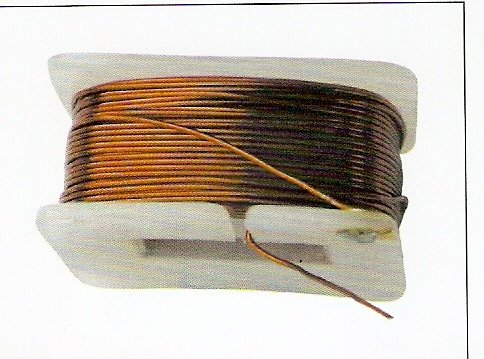
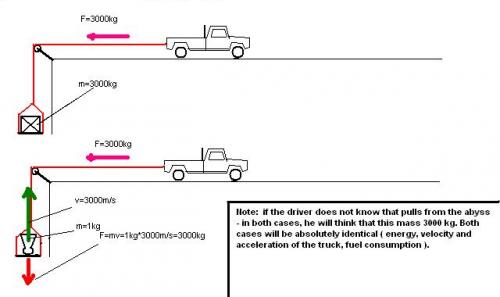
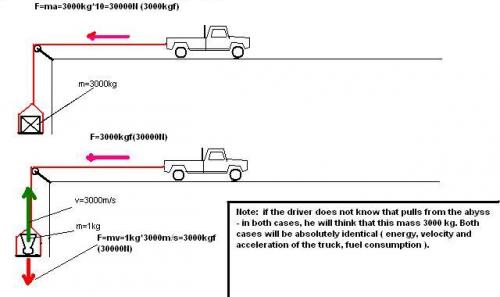
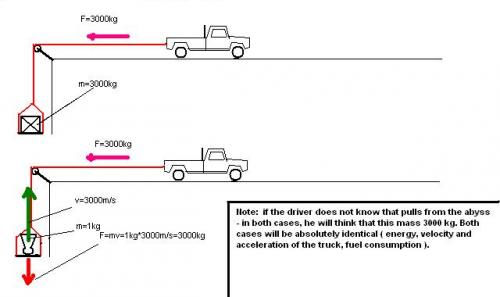
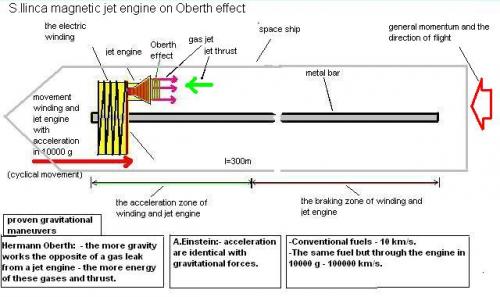
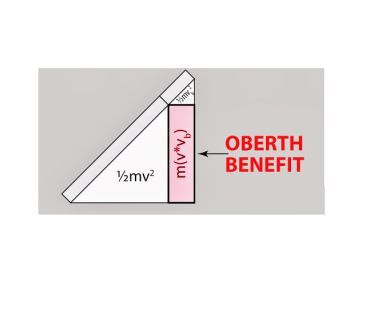
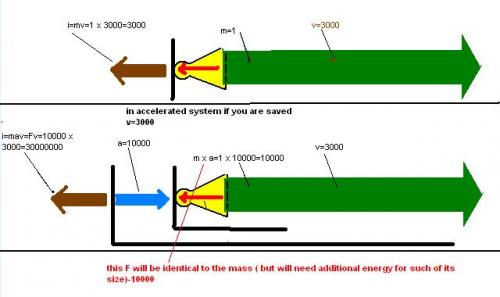
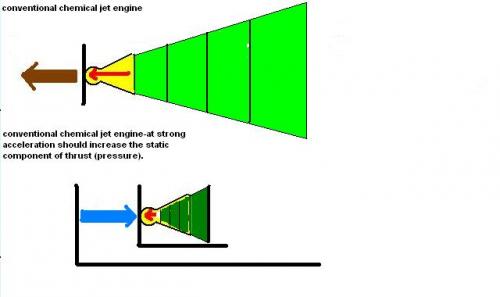
Wharp drive? S.Ilinca magnetic jet engine on Oberth effect
in Speculations
Posted
I think this engine will look something like this.